| Japanese Sword Polishing and Restoration BEFORE and AFTER | |||||||||
| |||||||||
| |||||||||

This page shows blades polished by Japanese art sword polisher David Hofhine both before and after polishing. Click on the Recent Work or Facebook link for lots more pictures.
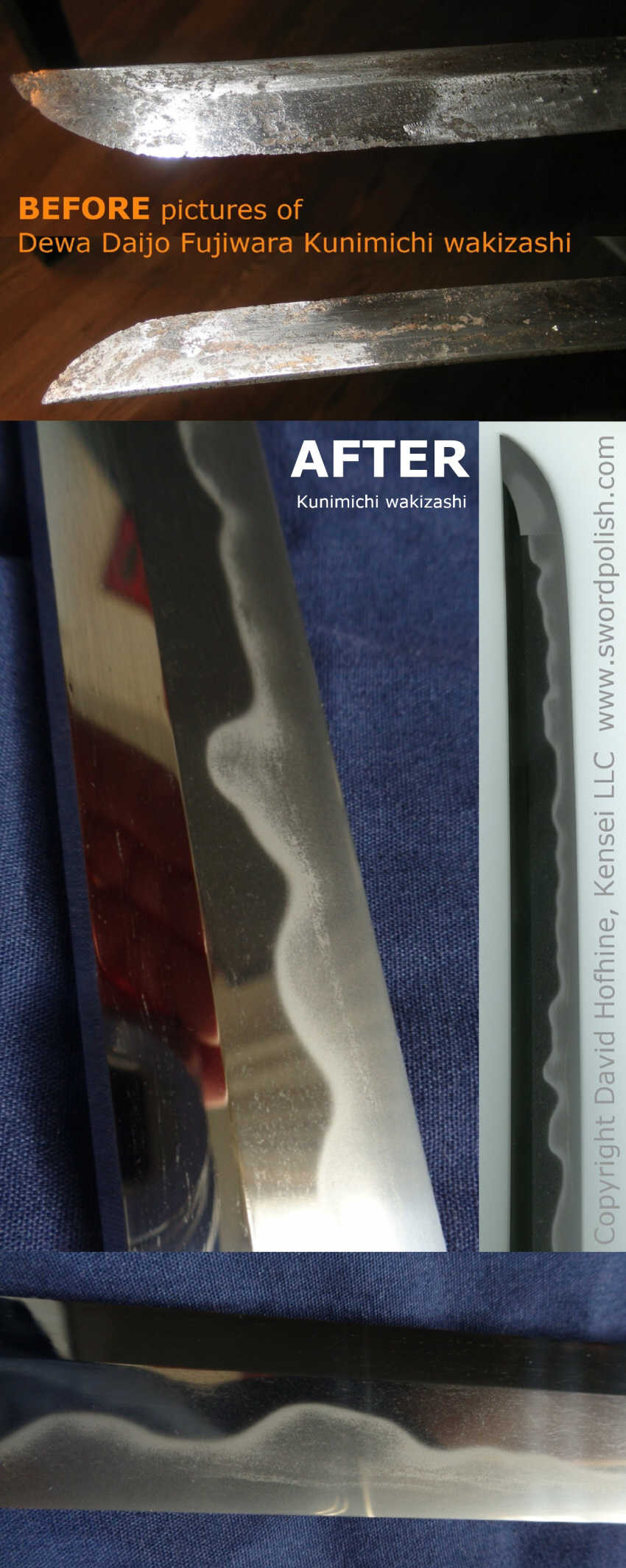 | ||||
Before
and after pictures of a 22 1/4" wakizashi signed "Dewa Daijo Fujiwara
Kunimichi". This one started out so bad, that I was concerned
that
it wouldn't be salvageable. It was a very strong and well
forged blade that came out nearly flawless. See
online comments for this blade here. See BEFORE and AFTER pictures of another Dewa Daijo Fujiwara Kunimichi blade I polished here. | ||||
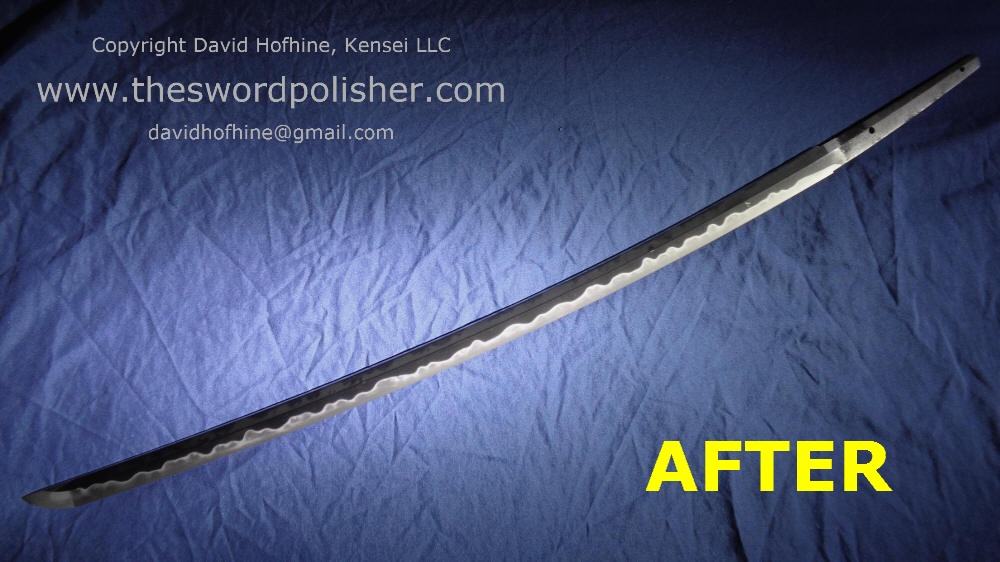 This is a very important blade. It is signed and attributed to the first generation HIZEN KUNI DEWA DAIJO FUJIWARA YUKIHIRO. This exact blade is featured in the book Japanese Swords of Hizen Province, by Fredrick A. Fimio. It started out with a VERY high grade and reasonably recent professional Japanese polish, but somewhere along the way it picked up a nasty little chip down near the kissaki (point). It was up to me to not only fix the chip, but also match or surpass the nearly perfect previous polish from Japan. The owner is very happy with the results! | ||||
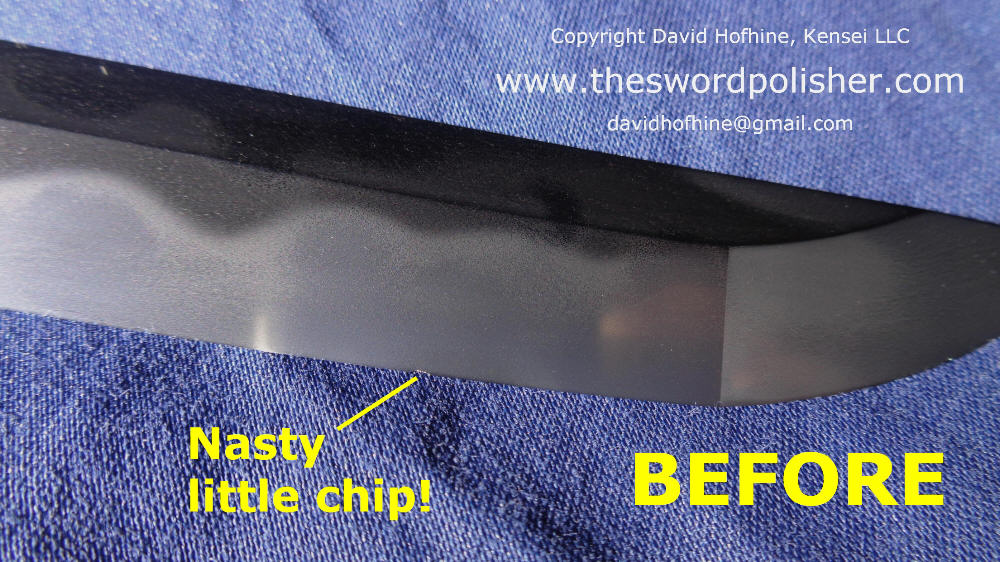 | ||||
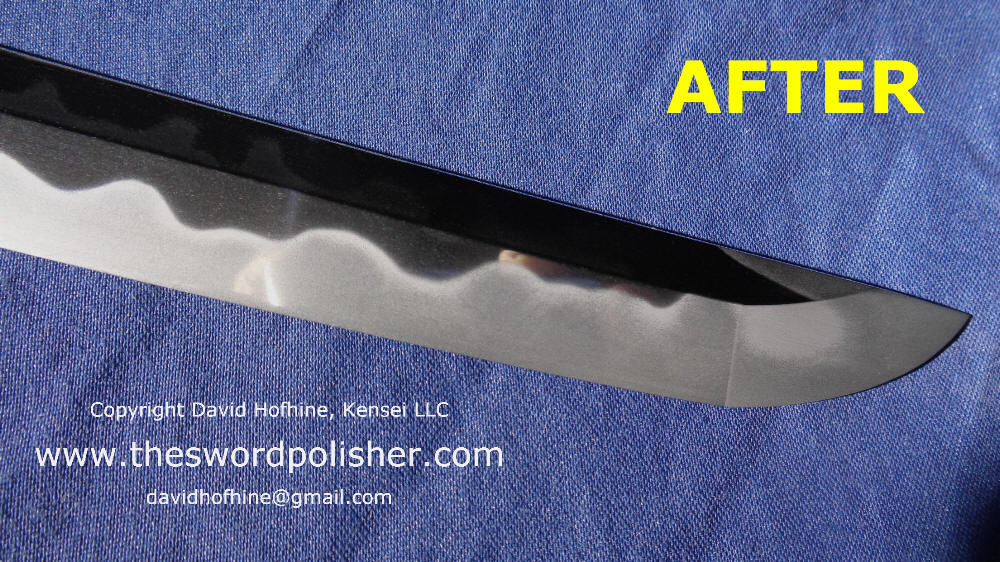 | ||||
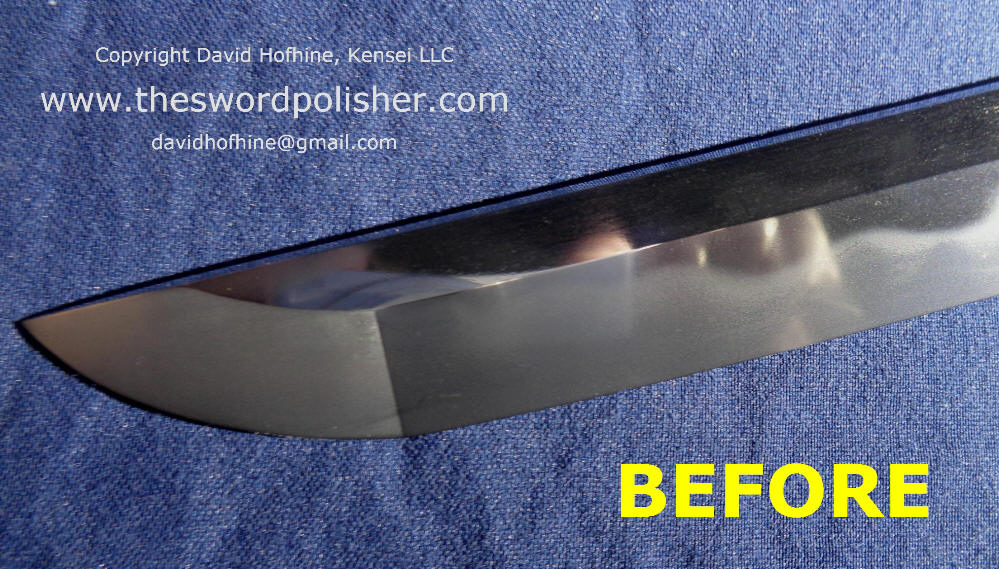 | ||||
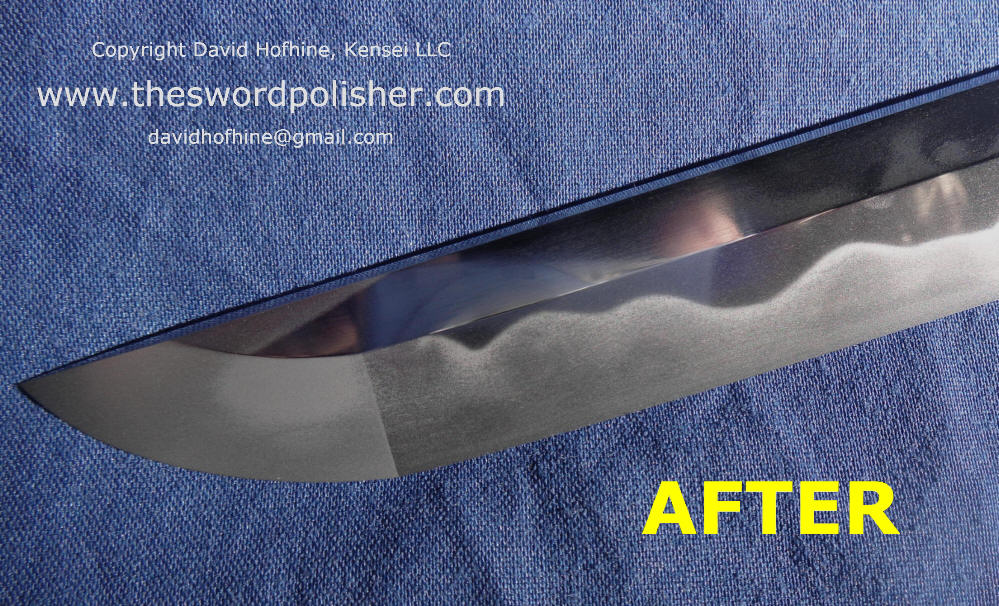 | ||||
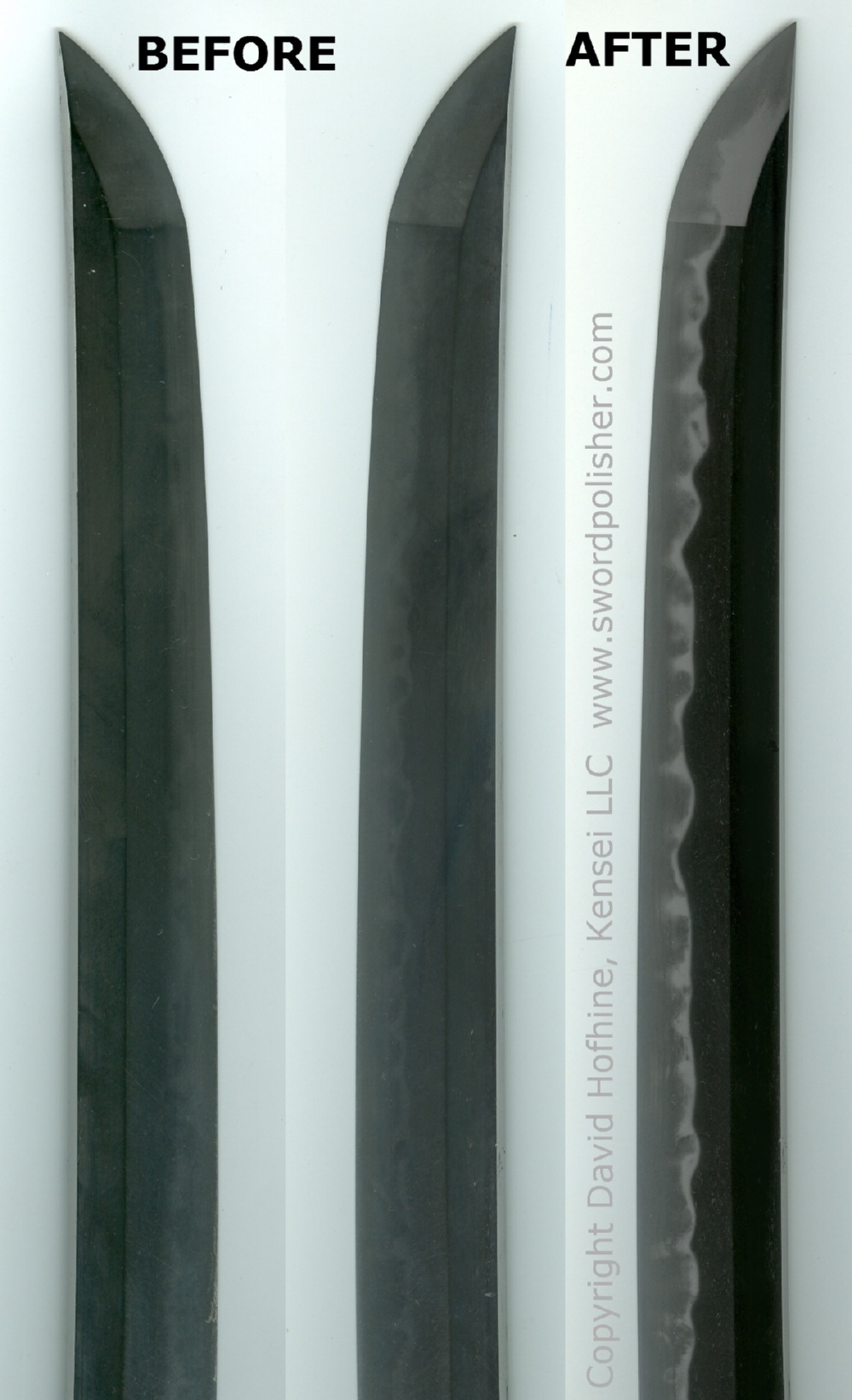 A very hearty 28 1/2" Mino katana signed Kanetaka. This blade wasn't rusty or damaged at all. It just had a tired, worn out looking older polish. After just a Finish polish, it looks like new! See online comments for this blade here! | ||||
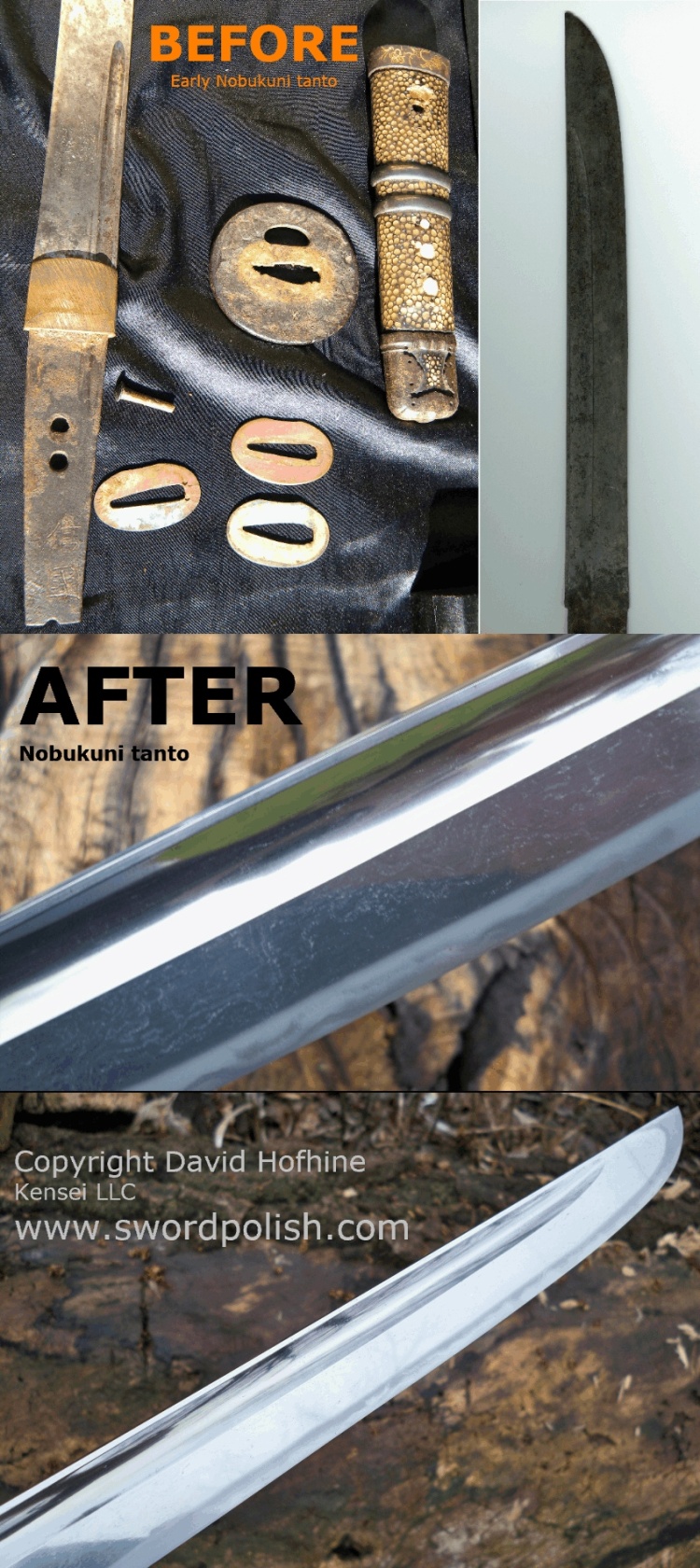 | ||||
Before
and after of a very early Nobukuni tanto. More information about this blade here! | ||||
 |  |  |  | |
| This
is a 28.5" orsuriage Oei Bizen masterpiece. All four of the
above
photos are of the same blade. This blade has great choji utsuri which
unfortunately can not be seen very well in the photos. I
spent a
full month working on just this one blade, confirming my status as a
starving artist. See online Facebook comments for this sword here! | ||||
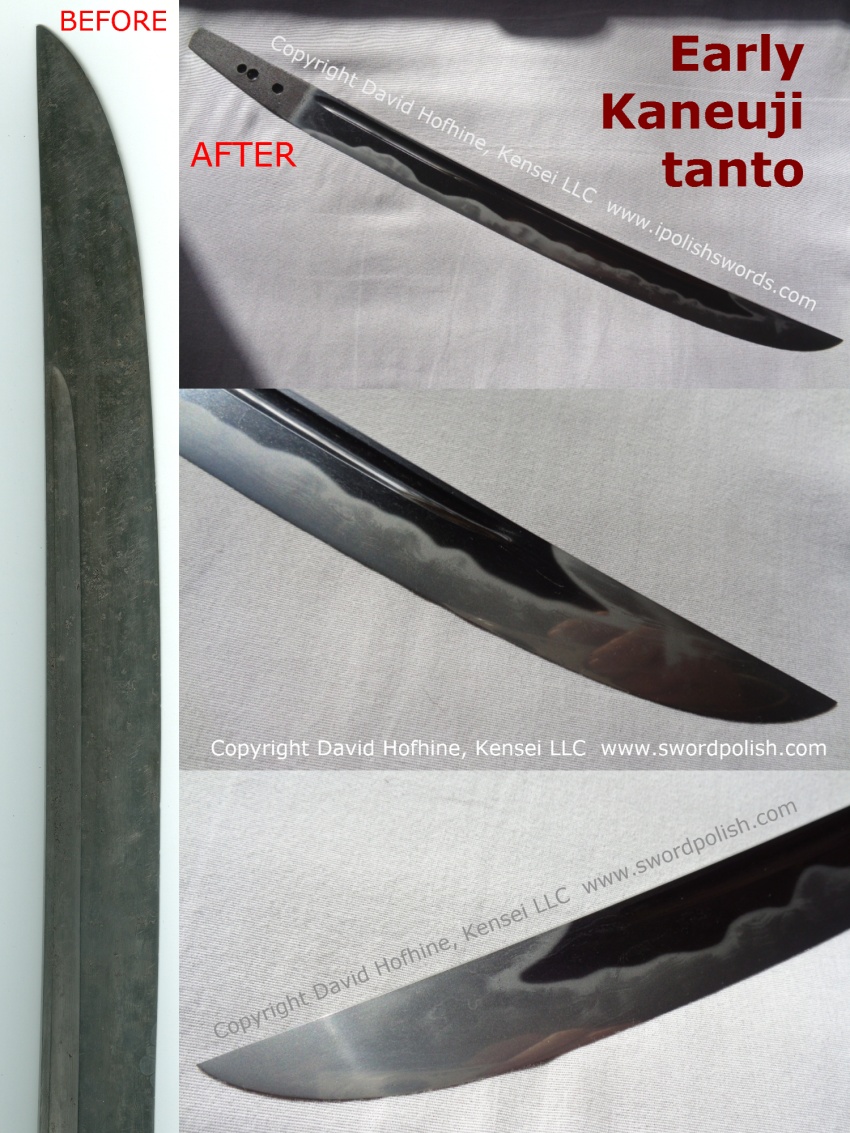 Early Kaneuji tanto, before and after photos. See comments and feedback for this blade here! | ||||
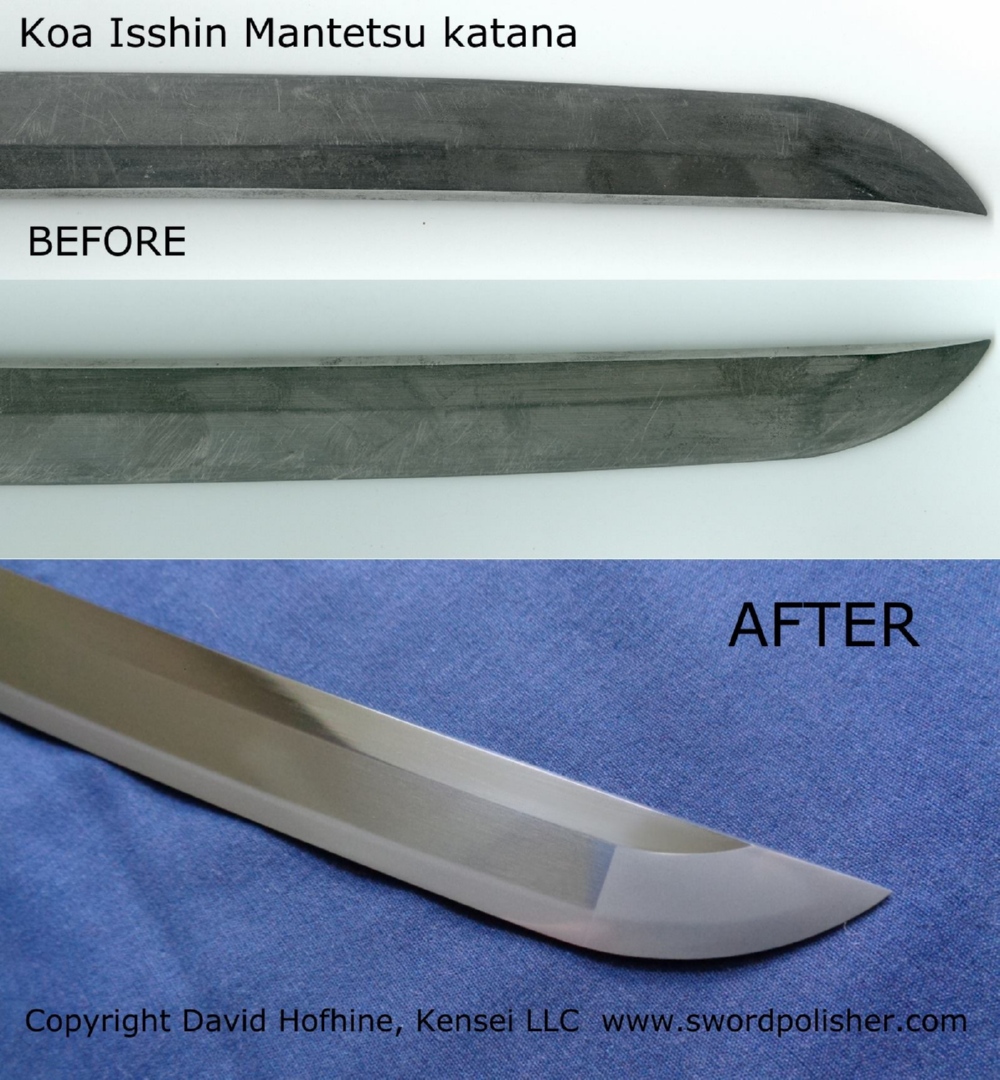 Before and After of a WWII era Koa Isshin Mantetsu katana. I usually don't work on showato, but this was an important family heirloom blade and the owner wanted the very best possible finish. I am always honored to work on family heirloom blades. See comments and feedback for this blade here! | ||||
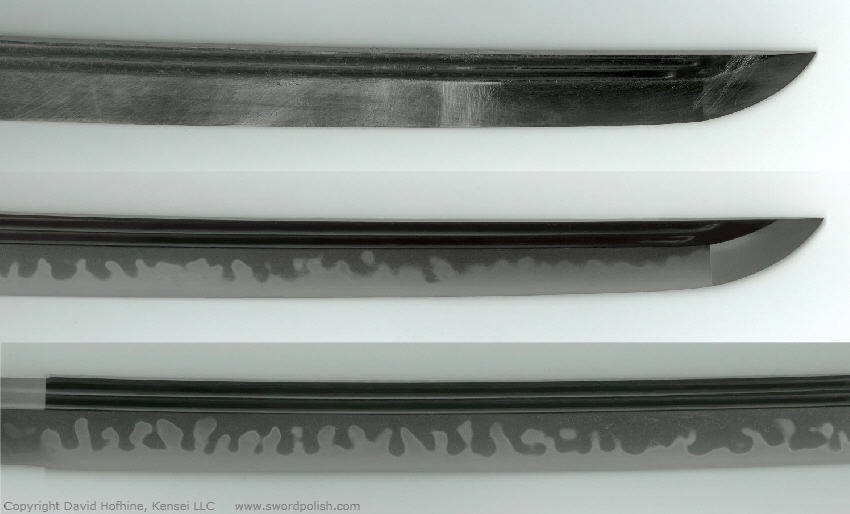 |
||||
| This
27 1/2" osruiage blade signed Echizen Kuni ju Kaneyoshi with double
grooves on both sides polished in a sashikomi style. This
blade has 4 peg holes and was originally 6 1/2" longer! This
was a pretty tricky polish because of the bad pitting rust in the
grooves. Also, this type of sashikomi finish is actually more
difficult to do well then the more typical keisho style finish.
See this page
for more information on the difference between keisho
and sashikomi finishing. | ||||
 This is the Before image
of mumei wakizashi
with papers attributing it
to Yosasaemonjo Sukesada circa 1504. |  This is the same Sukesada
blade after full traditional art polish. See
the Recent Work
page for more pictures of this blade! This is finished in a
light
keisho style. See this page
for more information on the difference between keisho
and sashikomi finishing. | |||
 |  | |||
| This
is a before image of an unsigned 15 7/8" wakizashi. The
starting condition is pretty terrible. | This
is the same blade after full traditional art polish. An
unsigned, ruined condition little blade like this has very little
chance of ever making it to Japan for restoration due to the high cost,
complexity and risk involved with getting a blade over there and back
safely. | |||
| HEAD to HEAD COMPARISON | ||||
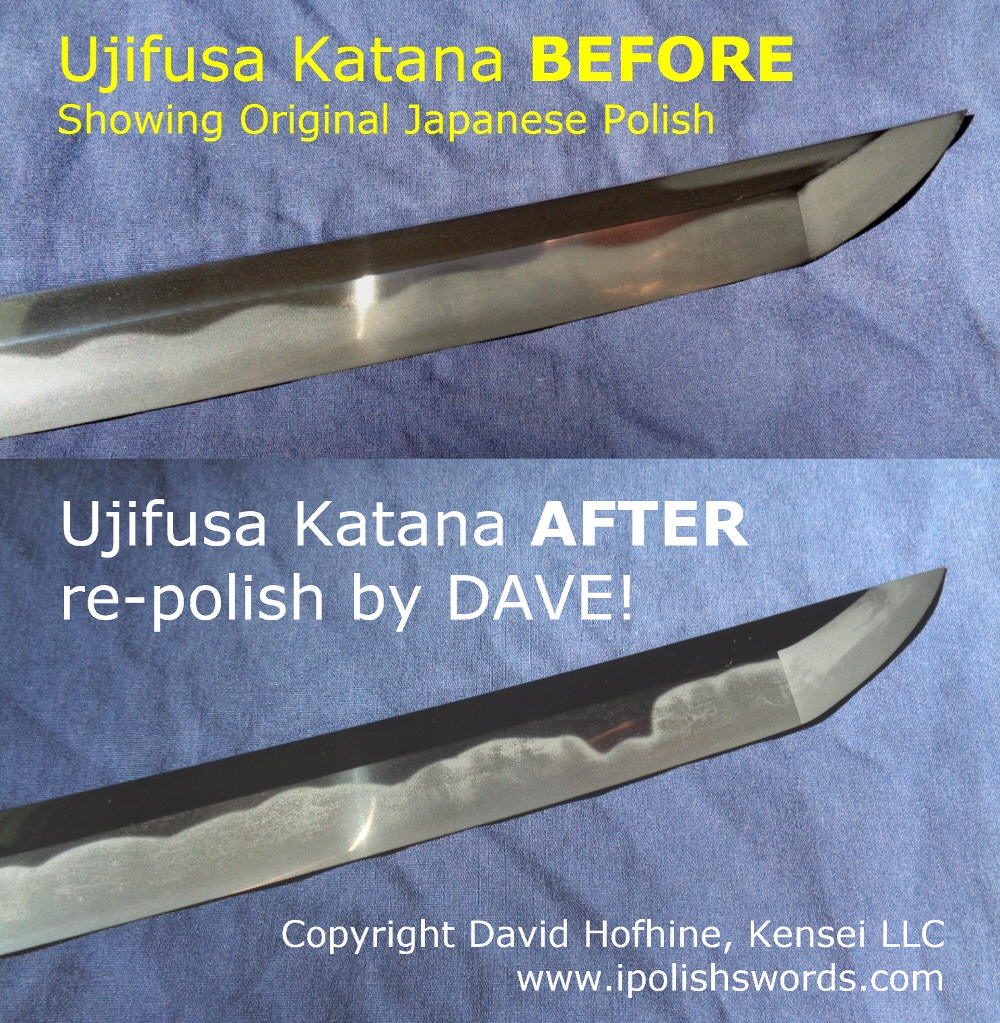 See online comments and feedback for this blade here. 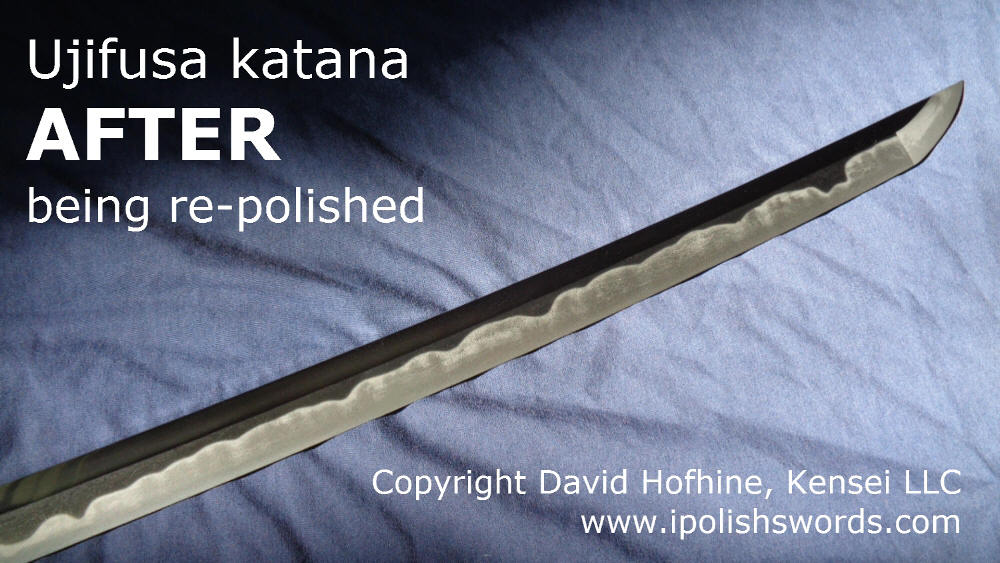 Here is a head to head comparison of the 27 5/8" katana signed: Hida no Kami Fujiwara Ujifusa. This blade had a recent top quality professional polish in Japan. The owner was unhappy with the Japanese polish which had a pretty heavy keisho finish that hid all of the details of the hamon (temper line) and hada (grain pattern). He sent it to me to redo the finish polish and this is the result. See online comments and feedback for this blade here. | ||||
This
ia a 10 3/8" osoraku tanto by the modern era smith Kato Kanekuni.
It was a little scuffed up, but still had most of its
original modern polish from Japan. The problem was that the origianl
polish did not do a good job bringing out any of the detail in the
kissaki (point) and very little of the hamon (temper line) and hada
(grain structure). The owner sent it to me hoping that I
could imporve on the original Japanese polish.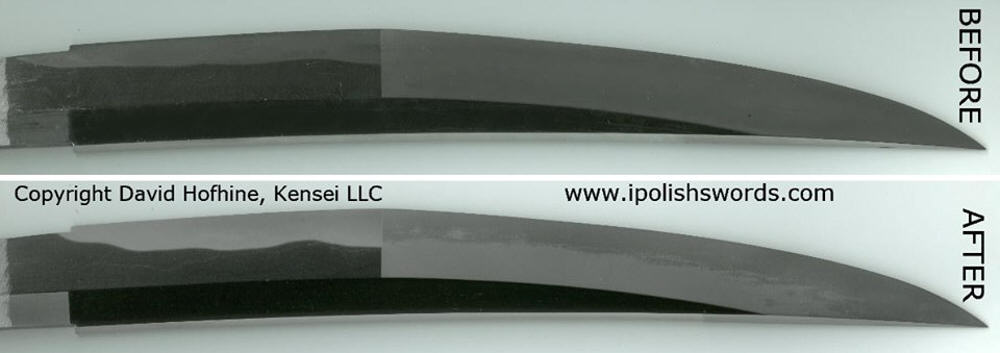 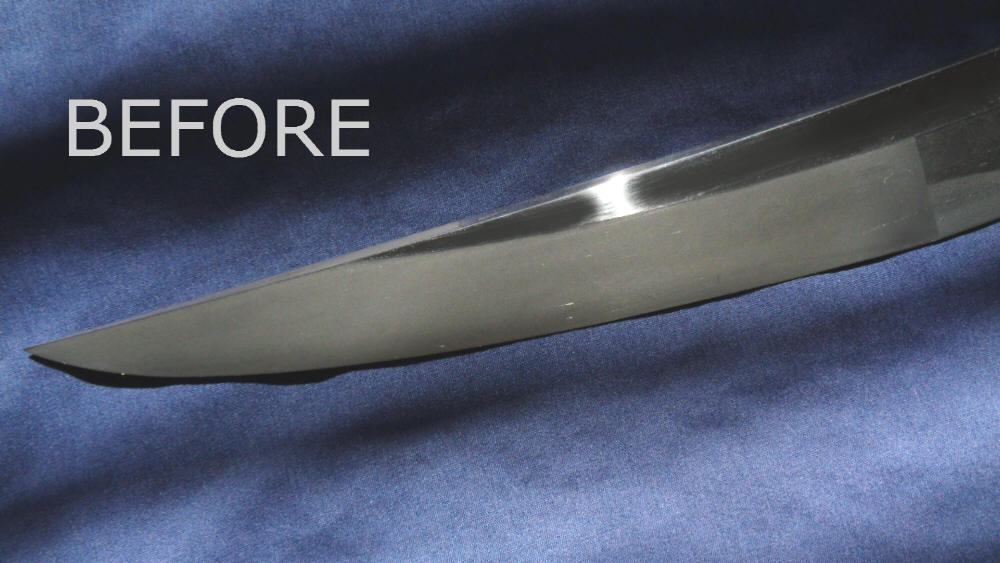 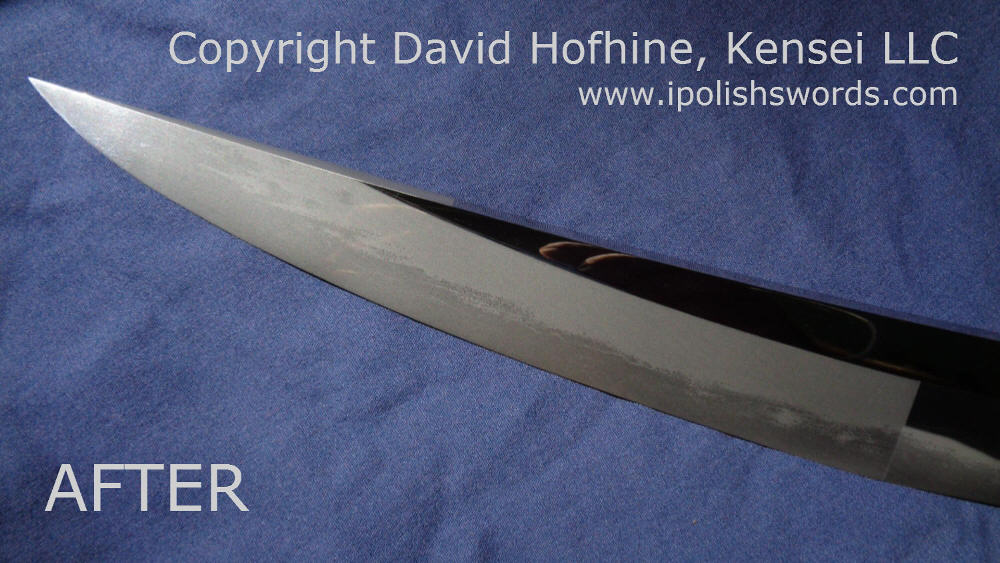 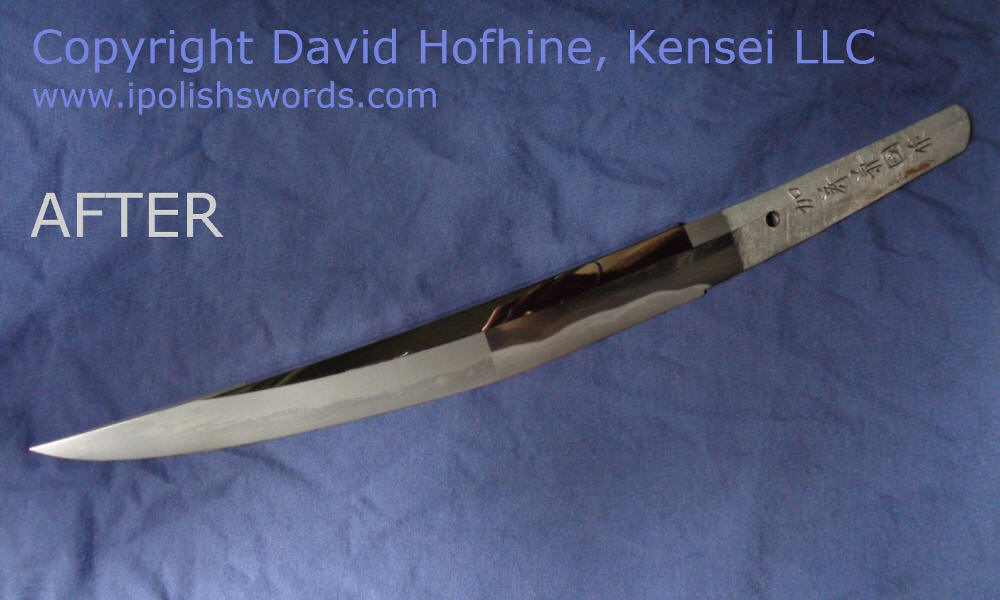 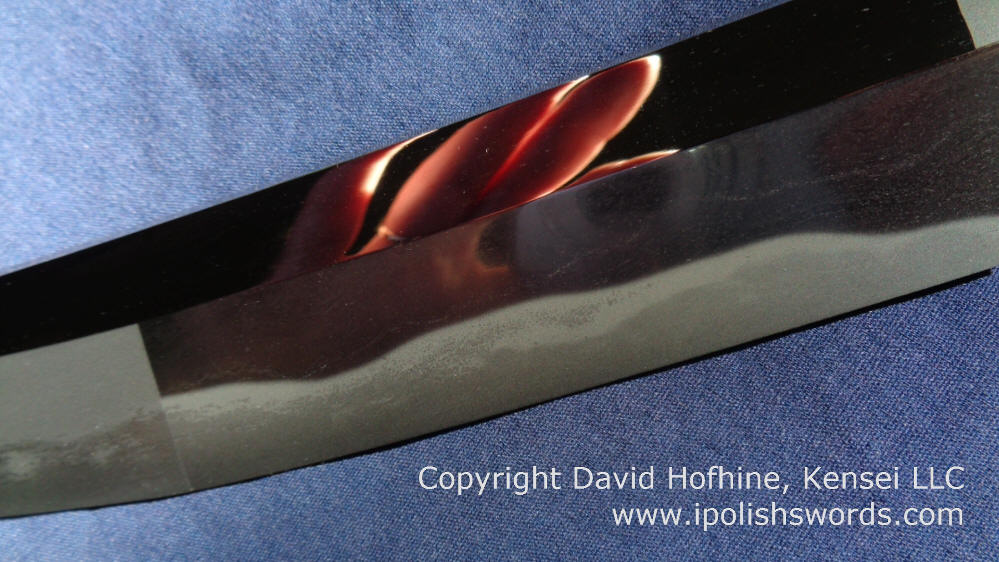 See online comments and feedback for this blade here. | ||||
 This is a 26 1/8" osuriage
mumei katana with a Fujiwara Takata attribution. This was
polished by
one of the more well known
professional Japanese sword polishers working in the United States. The
owner was unhappy with the
thick and muddy appearance of the hamon and kissaki and sent it to me
to see if I could improve on this other polisher's work. This
blade had also
been sent to Japan for shinsa and was somewhat scuffed up in
the process.
|  Here it is after I redid the finish polish. I had to take the ji all the way back to the chu-nagura stones to completely remove the heavy keisho finish. This blade was actually pretty tough to improve on because the hardness contrast between the temper line and the body was very subtle. It took a lot of meticulous work and my finest hadori stones, but I think the results speak for themselves. I also repaired all of the scuffing along the edge and near the point. A more precise attribution may be possible now that you can actually see the temper line. | |||
 |  | |||
| This is a BEFORE
and AFTER comparison of a 29 7/8" katana attributed to Tango No Kami
Kanemichi. This blade started with a high quality 1970's vintage polish
from Japan along with a little tip damage. The hamon detail
was
very hard to see and it had what I felt was an excessive amount for
grain showing in the shinogi-ji. | The
original Japanese polish was very good. All of the lines and
geometry (most important part) were perfect. It just needed a
new finish that was up to modern standards. I fixed the point and
re-did the entire finish polish.
I
kept the camera
settings the same so it would equally represent both finishes. | |||
| FINISH POLISH ONLY! | ||||
 Here
is an
interesting example of a FINISH polish only. Please do not
let this
blade give you the wrong idea about finish polishes. Someone
had used
fine finger stones to clean this blade, so it looks pretty gray, but
other than that it had a basically smooth clean surface.
|  Note
the deeper
scratches and small chips it had could not be removed with just the
fine finishing stones. I can't even tell you how many times
people have
sent me a rust spotted sand papered mess and expected super fine
finishing stones alone to somehow clean it all up. This is
frustrating
on both ends, so please read the description on the SERVICES page carefully
about what can and can not be fixed by finishing stones alone. | |||
| FIXING A BROKEN POINT! | ||||
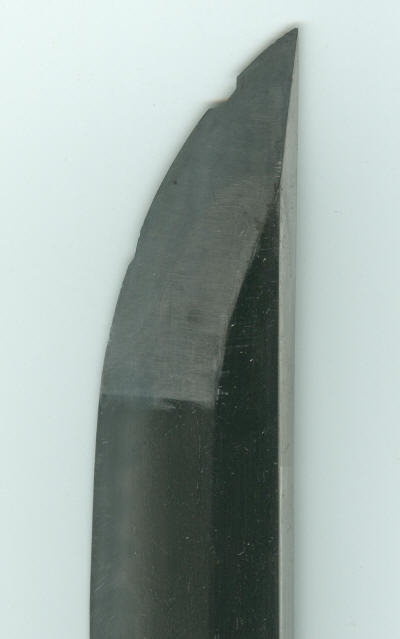 | 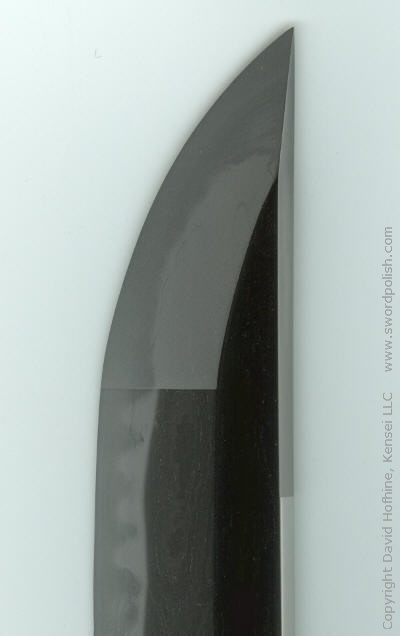 | |||
| MOUNTED BEFORE AND AFTER | ||||
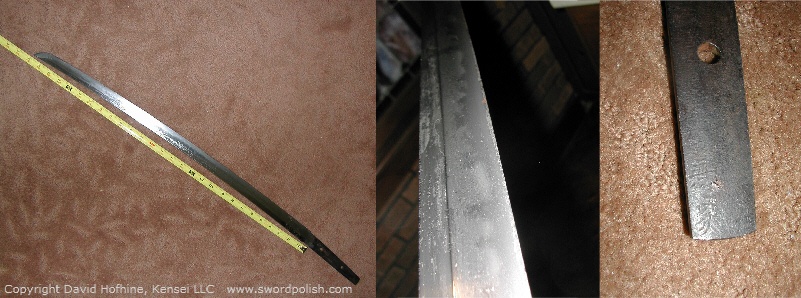 | |||
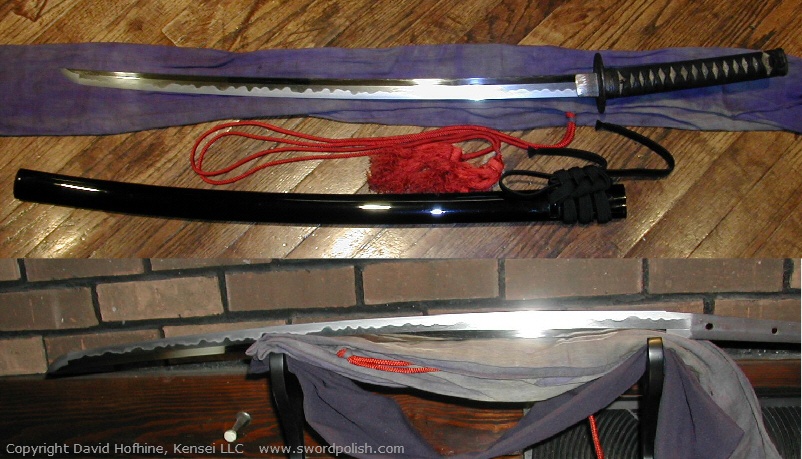 |
 Home |  |  Services |


 Shipping Shipping
|
 Schedule Schedule
|
 Recent Work Recent Work
|
Please note, the blades featured on this web site are not currently in my possession, do not belong to me and are not for sale as far as I know. An absolute minimum number of blades (usually just one or two unmounted and unpolished) are kept on hand at all times to minimize liability. -David Hofhine





